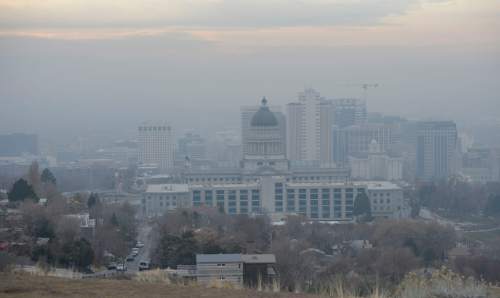This is an archived article that was published on sltrib.com in 2016, and information in the article may be outdated. It is provided only for personal research purposes and may not be reprinted.
Yes, it is as annoying as all get-out when so many of the health studies we read about in the newspaper — drink more coffee, no, drink less coffee, no, drink red wine — end with the same old qualifier: More study is needed.
But in the case of the research announced last week by the Utah Division of Air Quality, more study is exactly what's needed. Active, targeted, real-time study aimed at finding and squelching sources of toxic materials rising into an airshed that is already among the most unhealthy in the nation.
The folks at the DAQ are ready, willing and able to do it. Or would be, if the Legislature will fork over the cash.
The division has been taking measurements of airborne toxins since 2002, first with a monitoring station in West Valley City, later moved to Bountiful. In 2015, with some additional state funding, two additional air grabbers were added, one in West Valley and one in Lindon.
Measured levels of such iffy chemicals as formaldehyde, acetaldehyde, benzine and methylene chloride are high enough to raise the eyebrows of state and federal regulators but, according to the best science available, not expected to live up to their carcinogenic potential in more than, maybe, 43 people out of a million.
Which is no comfort if you are one of those 43 people. And still quite enough to cause problems among vulnerable individuals, generally described as the very young, the very old and those with asthma or other breathing problems.
One particular puzzler is the sharp rise in the measured levels of methylene chloride at the Bountiful station beginning in late 2008 and continuing through the present day. The chemical is not known to exist in nature and is generally emitted by the manufacture of some drugs or the making and use of certain paints and solvents.
That is just the most obvious example of the need for the state to make its air monitoring network much more extensive and much more immediate. That way we will have a chance of knowing not just what bad chemicals are in our air but where they came from and, at least in some cases, how to reduce or eliminate them.
The people of Utah — and their lungs — deserve the best we can provide in terms of air quality monitoring and clean-up, with specific sources pinpointed as accurately and quickly as humanly possible. That way we can have confidence that any and all industrial sources of pollution have been targeted and people who drive their cars, heat their homes and light their fireplaces aren't made to feel they are unnecessarily bearing the brunt of necessary action.



